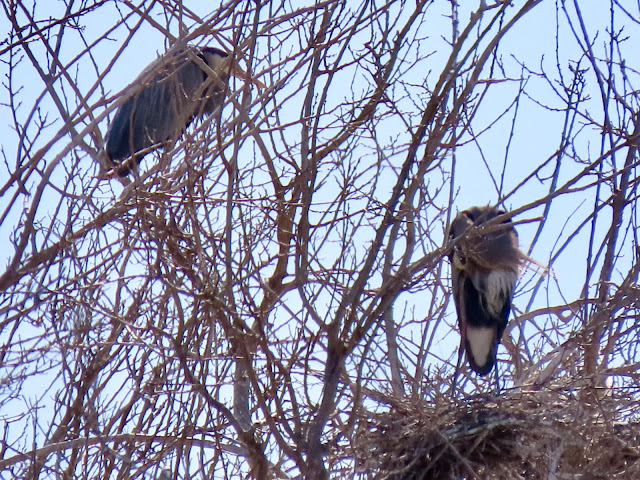Wednesday, February 9, 2022
Checking wind reports for Saguaro Lake up to the last minute, a marine report finally provided "winds of two to four miles/hour" during our planned time on the water. So, almost suddenly, it seemed, our community birders were in a "GO" situation rather than needing to cancel. Ignoring earlier "high gusts" reports, we decided to go check it out.
Typically, Santa Ana winds form over the mountain ranges between California and Arizona in the fall. California suffers the brunt of these winds as they blow west in cooler months after building up in the fall. Arizona sometimes gets its own winds from the turbulence. Not wanting to put ourselves in the least bit of jeopardy, we were now game for going with the current mild wind forecast. "Grab and Go!"
Gloria K. instigated the idea of Lake birding. All ten of us were supportive as she took the lead in making it happen. Karen M., our captain, handled the 12' pontoon boat smoothly despite birders in the front of the boat sometimes standing, probably blocking her clear view of the Lake ahead.
Swinging around the Stewart Mountain Dam for starters, it appeared Cormorant would be our only species out there. Oh, no! Coming in just a bit closer, waterfowl were beyond the dam, too. NORTHERN SHOVELER and COMMON MERGANSER were among RUDDY DUCKs and AMERICAN COOT.
The two species of cormorant, NEOTROPIC and DOUBLE-CRESTED are more difficult to identify in basic (winter) plumage, their current status, than in mating plumage. They love inland lakes around Arizona.
While DCCO, less than ten inches larger than the NECO, size makes little difference not only to beginner Birders, but to those of us more seasoned. For those of us here year-round, we've learned that the NEOTROPIC is not only smaller (25") but has a relatively long tail and a short bill making it appear slim and lengthy in flight. The DOUBLE-CRESTED (33") appears more "squat" in the air with a short tail and broader body. Numbers for these two species, individually, stood at 50 - 50 for each, which is undoubtedly low but we focused on other waterfowl.
Although my file photo of these two species, taken at Margaurite Lake in Scottsdale in the month of January (2017), the birds are closer to their mating plumage than the ones we saw out on Saguaro Lake.
Neotropic Cormorant are on the left; Double-crested on the right, where size difference is very apparent. Note the V-shaped white-feathered border on the Neotropic's chin patch. Those feathers were not yet showing (mating plumage) on the birds we saw on Saguaro Lake, making identification more challenging. The DCCO has orange lores and a rounded border of bare orangeish skin beyond its bill, both of which are difficult to see when the birds are in flight.
As we moved away from the dam towards the wider part of Saguaro Lake, EARED GREBE were abundant. (64). Early light was reflecting off the water. Note the Grebe's red eye and the way it carries itself in the water.
Glenda, always ready with her camera, managed a good photo of a BELTED KINGFISHER that happened to fly by. 
Farther along, we came upon a GREAT BLUE HERON rookery. It was a busy place.
Our count of 22 RING-BILLED GULL may be on the low side; they appeared back and forth during our venture out and back on opposite shores of the water.

Eventually, we found the expected rafts of WESTERN and CLARK'S GREBE. Two keys to identification is bill color and eye location. Olive or Yellow. Eye within black cap or below it.
 Photo above shows WESTERN GREBE, left rear; and CLARK'S GREBE, front right. from my files
Photo above shows WESTERN GREBE, left rear; and CLARK'S GREBE, front right. from my files An elliptical route around Saguaro Lake to Bagley Flats and back to the marina would not be complete without at least one sighting of a BALD EAGLE. Three sightings -- even better!
Talking to our Marina clerk when we returned the boat, he mentioned our day was the first calm water on the lake in about a week.
Until next time, then...
View this checklist online at https://ebird.org/checklist/S102338213
* * *









No comments:
Post a Comment